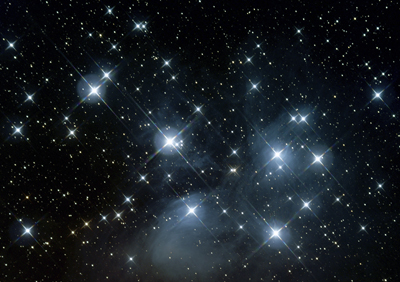
|
Everyone these days is talking about “Antifa,” the “antifascists,” who enforce their views with bricks and fists. Well, I have a cure for that. It’s the realization that no one is morally or ethically or humanly required on any and all occasions to speak out, speak loud, speak proud. I call it the “Antifanatic.”
The call to action—putting your heart and soul into discussion or pursuit of a particular proposition—is all too often the call for absolutism. Distinctions are pared away. Qualifications are eliminated. Shades of gray are painted over. The pursuer—or defender—is left with a nice, clear, easy to understand, impossible to refute “yes” or “no.” Everyone is either with us or against us. Do or die. Death or glory. … And this is a remarkable renunciation of the human capacity for reason.
That said, you don’t want to enter into hard battle, a shooting war, life or death, fight or flight while you are beset by doubts. When the bullets are flying your way, you don’t want to be—and you don’t want those on your side of the trench line to be—questioning, maybe, your responsibility, just a little bit, and your moral justification for receiving those bullets. When war comes, you put your quibbles aside and take up the gun.
But not every social situation is a war. Not every injustice is a cause for rebellion and revolution. And that seems to be the problem today, in our politics, our economics, our culture, and our social connections. Every issue rises to the level of New York Times 48-point Cheltenham Bold Extra Condensed all-caps headline font, usually reserved for a declaration of war. The volume is turned up to twelve on a scale of ten. And so distinctions and qualifications drown in the noise of drumbeats.
I say this because most of life is gray. Living is a matter of distinctions and qualifications. Choices are seldom “yes” or “no” but more a case of “better” and “worse,” of “maybe” and “it depends.” In very few cases is the benefit or the risk absolute but rather a matter of calculation. And that is what the human brain was developed for, after a million years of deciding how to live in the world. In the hunt, there is no perfect knowledge and no obvious choice. Instead, the game may be in sight but at just a bit too long distance, or with the wind or foliage causing interference. There is seldom a perfect moment for the shot, just a collection of perceived opportunities and risks. And in the gathering of foodstuffs, there is no single, perfect berry or tuber to be chosen and plucked, only a selection of those on either side of optimum size or ripeness. How willing a person might be to eat an overripe apple, and maybe eat around a spot of brown decay or maybe a maggot on one side, depends on how hungry that person is. Circumstances and perspective are everything.
But it’s hard to get a political movement or a religion—and these days they can often be confused—started with an overlay of rational analysis, the weighing of distinctions and qualifications, the necessary consideration of “maybe” and “it depends.” The political leader wants his followers to shout “Yes!” The pastor wants his congregation to give a big “Amen!” That’s how you build a compliant crowd—by paring away individual thoughts and distinctions and cutting away any middle ground.
As a writer, I do not have the luxury of retreating into absolutes, of indulging the human craving for pure black or pure white, of sliding into absolutism. The writer’s job is to see multiple viewpoints, or so I believe. My characters are not—should not be, cannot be—creatures of simple tastes and absolute beliefs. My heroes need to have doubts and failings. My villains must have thought and reason.1
Every human has a story. Most humans—except those who were mentally impaired to begin with, or have lost their minds through fever, dementia, or other illness—have reasons for their choices and actions. The story may be tragic and leave the person bruised and selfish. The reasons may be faulty and the choices hasty. But those are all clues to character. Every human being is a ball of string set in the glue of circumstance and opportunity. And it’s the writer’s job with an imagined fictional character—or the psychiatrist’s, with a real patient—to untangle or cut through the string, to see how the glue seeps into the layers of choice and desire, and to find the main strands of personality. This is the excitement of exploring a character as he or she navigates the obstacles of a plot and action.
The fanatic would dismiss all of this discernment and analysis as irrelevant. The fanatic pushes a single thread, a single viewpoint, to the edge of absurdity—and sometimes goes right over into virtual madness. Any position taken as an absolute will lead to absurdity. In a world of “zero tolerance” about personal weapons, a nail file or a butter knife becomes a verboten possession. In a world of absolute support for a woman’s right to choose, strangling a baby at birth becomes a reasonable option. In a world of absolute justice without compassion or mercy, a man can be hanged for stealing a loaf of bread. Fanatics always end up defending positions that any reasonable person would find questionable, unjustified, and sometimes abhorrent.2
Reason is the human birthright. The ability to think and act as an individual, rather than as part of an arm-waving crowd, is every person’s prerogative. This is why human society is so varied and diverse: we each see a different set of distinctions, shades of gray, opportunities and obligations, benefits and risks.
Let’s keep it that way.
1. This is one reason I don’t write fantasy. It’s too easy to paint the villains as mindless evil for evil’s sake. Even a psychopath or a sociopath has a background story and a reason for his or her choices. In The Lord of the Rings, for example, the titular character and driver of the entire story line, Sauron, is never shown as a viewpoint character or even as any kind of living presence. Sauron is pure evil, malice without reason, power for power’s sake, the dark cloud that stretches in the east. We never get inside Sauron’s mind because there is no human mind there, just the darkness. This is not a failure on Tolkien’s part, but Sauron is the one character in the whole saga who operates without a discernible motivating cause and cannot be mistaken for human. Sauron is the fire, the storm, the mindless force of raw nature, not someone with whom we can identify—or bargain, negotiate, and reach agreement.
2. One of the reasons I am not a serious collector of things—stamps, coins, Hummel figurines—is that the initial attraction and the “Hey, neat!” response of the beginner eventually becomes the feverish pursuit of the rarest, least obtainable, and sometimes the ugliest or most flawed member of the defined group. (This is because ugly or flawed things usually don’t get produced in large numbers. Cf. the U.S. “Inverted Jenny” 24-cent airmail postage stamp.) I want to preserve the beginner’s initial fascination and avoid the fanatic’s ultimate heartbreak.


